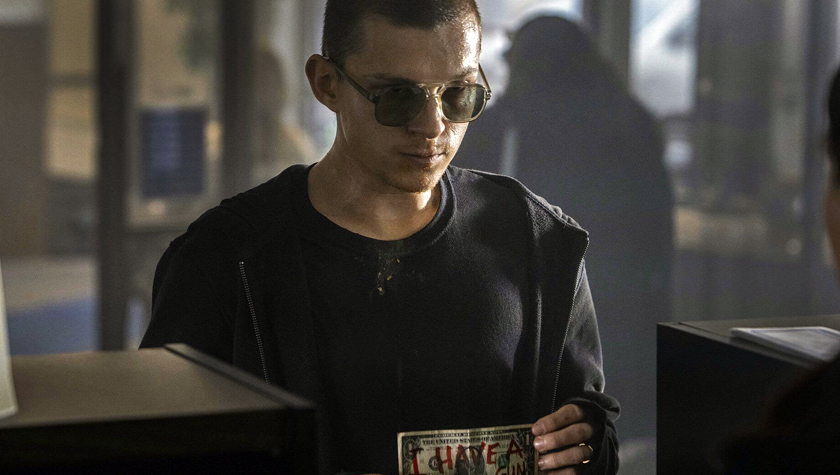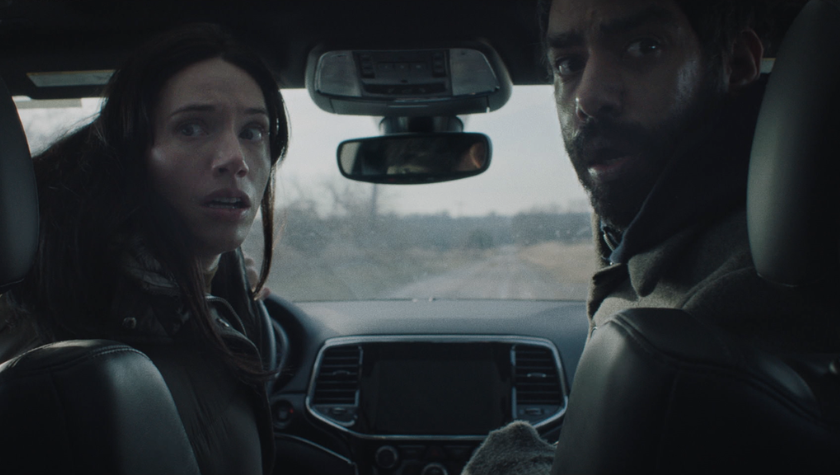Siân Heder's 'CODA': Writing and directing a film with deaf actors from a hearing person's perspective
August 19, 2021
CODA (also the acronym for Child of Deaf Adults) written and directed by Siân Heder follows Ruby (Emilia Jones), the only hearing person in her deaf family. A beautiful coming-of-age film with all the familiar genre beats, CODA takes the viewer on a heartwarming journey of a young woman discovering her place within her family and within the world at large. Adapted from the French film La Famille Bélier, CODA's all-star cast (deaf performers, Oscar® winner Marlee Matlin, Troy Kotsur, and Daniel Durant) amplify the film's authentic touch; along with the setting which could be considered a character within itself, this film portrays the day-to-day experiences of deaf people.
Heder was initially approached to do a remake of the French film, though was also given the opportunity to use the original film as a springboard to creating her own original premise. Heder was inspired by La Famille Bélier and says, "It's such a unique experience, being raised inside of deaf culture as a hearing person; Ruby is torn between the two worlds, trying to figure out where she belongs."
The film is set in Gloucester, MA, and Heder says, "I grew up going to Gloucester — I thought it was a great setting for this family and their story. It's a fishing community that was decimated through regulations over the last two decades. People have lost their livelihood. In all the despair, it's an exciting place to set a story."
"It helped that I knew the town — our prep was such an exploration — Diane Lederman, our set decorator, came to set before everyone else arrived and we explored the dock together, hanging out with lobstermen and dragger boats to really see which parts of the process were exciting visually; you have these vistas and interesting pops of color (fishing gear, nets, ropes)."
"[DP] Paula Huidobro and I explored a lot of the contradictions within the town — it’s a quintessential New England town that is very working class and gritty."
Finding the Rossi house was a huge part of the filmmaking process. "It was so fun," says Heder. "We were scouting clammer shacks — these houses are tiny and ramshackle — and we came across this one and I knocked on their door and said, 'your house is perfect;' the owners were like 'No way!', and I was relentless. I wooed them. Same with the fisherman. I'm there in local bars buying beers for people after their day of fishing so that I can convince them to use their boat... Practical locations like this have a character and depth that you don’t often get."
As a hearing person, Sian remarks that writing and directing a script for deaf performers was a completely new process for her. "I am hearing and I was previously not a part of the deaf community, and therefore my understanding of ASL was a journey for me."
Heder wrote the script in English dialogue and infused it with comedy like a writer would in any other script. Her next step was taking the script to an ASL Master to do the transcription and interpretation.
"It was letting go of the expectation of how a joke would work. ASL is a purely visual language. Almost half the script is ASL (40%), so half of what I wrote on my laptop was going to be completely transformed — finding my intention, the character's emotional journey, and then the right signs; it was an incredible journey."
The script transformed onset in the moment with the actors, finding improvisation. "It was such a fluid experience," says Heder, "[and] Marlee [Matlin] is a riot. We had a lot of fun working together; she was a great collaborator. She plays a very flawed character — a mom who is wrapped up in herself; she’s having a hard time seeing who her daughter is outside of herself."
Heder identifies herself as a writer-director who focuses on performance more so than her original written word. "I’ve heard stories about writer-directors who feel beholden to the script they've written. I’m the opposite. My director self takes over from my writer self. And so much of CODA was coming into this film, knowing what I didn’t know, to allow myself to discover moments and find authenticity within the scenes and the culture of this family — which meant sometimes throwing out ideas."
The experience, therefore, leant itself to some improvisational rewrites. Heder says, "Sometimes we would discover a joke was ten times funnier in ASL than on the page. There was a lot of composition and script development happening in the moment."
"I was ruthless and cut over thirty scenes in the edit. I realized, every character has a story and a full journey, but that full journey doesn’t always belong on screen. My editor is one of my key collaborators and looking at what story we wanted to tell, versus the one we were currently telling at any given time in the edit, it all required making choices that supported the singular story of this one family."
To Heder, CODA was born from the coming-of-age movies of the '70s and '80s. "Running on Empty is a great film. It's one of those stories that center [around] young people that are not exclusively for young people, and finding that feeling was important to me."
In the end, CODA is about family. Heder concludes, "We’ve just been reminded of the importance of family; right now, it’s the perfect time for the film to come out. People are longing to feel good and for these kinds of films. These kinds of stories, these characters, their journeys, they are so important."
Written by: Vanessa King
Vanessa King is an NYC-based producer, screenwriter, and professor who has worked in development with top-level industry talent for nearly two decades. Her work as a writer has received numerous awards, having earned her recognition from industry bodies including AMPAS/Oscar’s Nicholl Screenwriting Fellowship (feature) and Sony Worldwide Entertainment’s Emerging Filmmaker Program (TV Series). In 2005, she co-founded the New York Screenwriters Co-Op, New York’s only free-to-the-public screenwriting workshop with over 2000 active members. Vanessa is faculty at Gotham Writer’s Workshop (NYC) and Staffordshire University (UK), where she teaches both television and screenwriting to students, beginner to post-graduate. She recently was Showrunner of the TV pilot “Two Roads”, a concept she co-created and co-wrote for Sony’s VUE Network. Vanessa is passionate about diversity and inclusion within the industry and was a consultant on Final Draft Screenwriting Software’s Diversity and Inclusion product build. She’s a board member of the Diversity List, amplifying top scripts written by female-identifying and BIPOC writers. She is a judge for the Hip Hop Film Festival, The UCLA Graduate Screenwriter’s Showcase and The 24 Hour Film Festival. She was named one of The Huffington Post’s 13 Women To Watch and for three consecutive years, has been named to Vanity Fair’s “Downtown 100”, a list that recognizing New York’s top networkers in the entertainment industry. Originally from Canada, she lives in New York City.



